A street of history next to the Tokyo Metro Marunouchi line called Nabeya-Yokocho. Beloved by all the locals for the past 70 years, a shopping arcade that is a local landmark.
Album of Memories
1920~
1975~
Visiting the historic sites of Nabeya-Yokocho
Monument to the origin of Nabeya-Yokocho
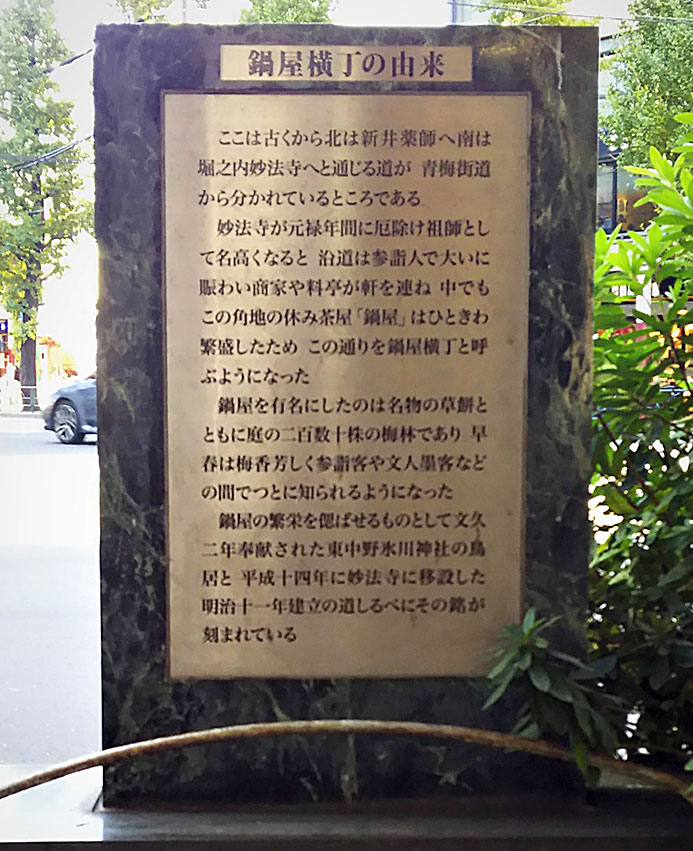 Dear visitors, did you know that the origin of the Nabeya-Yokocho name came from the fact that it was originally a place where nabe (cooking pot) vendors gathered to sell their products?
In fact, in the old days it was the street leading to Myohoji Temple, Horinouchi Suginami-Ku for the legendary talisman Ososhi-sama.
From around the middle of the Edo period worshippers walked through here endlessly and then a tea shop appeared.
The name of the shop was “”Nabeya”” which became very popular because of its delicious mochi dumplings (kusa mochi) and beautiful plum trees around this shop. In 1979 the Nabeya-yokocho Odori arcade 30th anniversary was celebrated and a commemoration stone was erected. On the stone was written these stories of Nabeya-Yokocho.
Dear visitors, did you know that the origin of the Nabeya-Yokocho name came from the fact that it was originally a place where nabe (cooking pot) vendors gathered to sell their products?
In fact, in the old days it was the street leading to Myohoji Temple, Horinouchi Suginami-Ku for the legendary talisman Ososhi-sama.
From around the middle of the Edo period worshippers walked through here endlessly and then a tea shop appeared.
The name of the shop was “”Nabeya”” which became very popular because of its delicious mochi dumplings (kusa mochi) and beautiful plum trees around this shop. In 1979 the Nabeya-yokocho Odori arcade 30th anniversary was celebrated and a commemoration stone was erected. On the stone was written these stories of Nabeya-Yokocho.
Explanation Sign Post
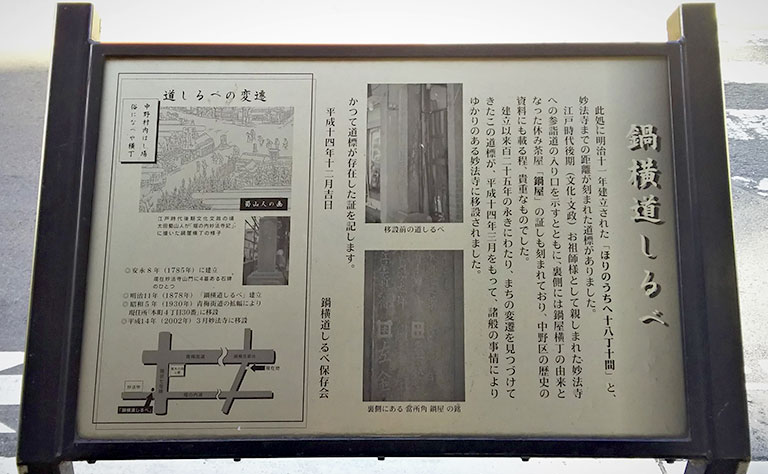 The origin of the location name derived from the name of the tea house “”Nabeya”” was etched on the stone, which has been a symbol of the Nabeya-Yokocho street.
In 2002 when a new building was constructed, the stone was relocated to Myohoji Temple where is related to Nabeya. Then, an explanation sign post was set up as a proof that there was the symbol here.
The origin of the location name derived from the name of the tea house “”Nabeya”” was etched on the stone, which has been a symbol of the Nabeya-Yokocho street.
In 2002 when a new building was constructed, the stone was relocated to Myohoji Temple where is related to Nabeya. Then, an explanation sign post was set up as a proof that there was the symbol here.
Gosha Inari Temple
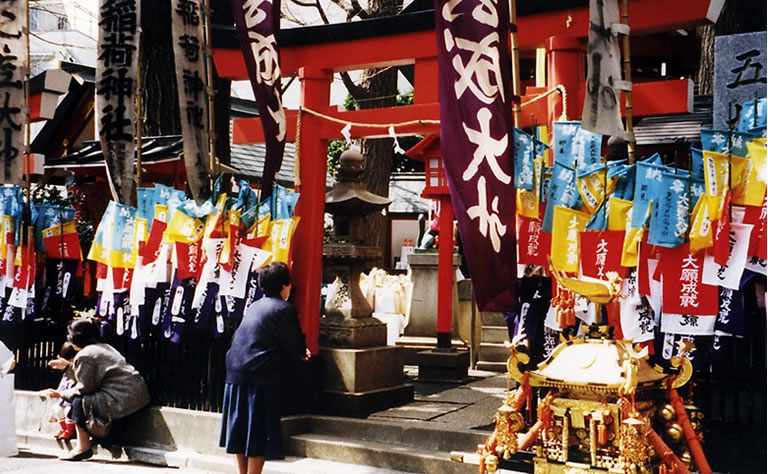 There is a sacred ginkgo tree over two hundred years old on the Gosha Inari Temple grounds where wishes are said to come true “Hikagiri No Inari”. Many worshippers would come to touch the ginkgo tree with their hands to get “spirit”.
This Gosha Inari is known as the “power spot” at Nabe-Yoko.
There is a sacred ginkgo tree over two hundred years old on the Gosha Inari Temple grounds where wishes are said to come true “Hikagiri No Inari”. Many worshippers would come to touch the ginkgo tree with their hands to get “spirit”.
This Gosha Inari is known as the “power spot” at Nabe-Yoko.
Jigen Temple
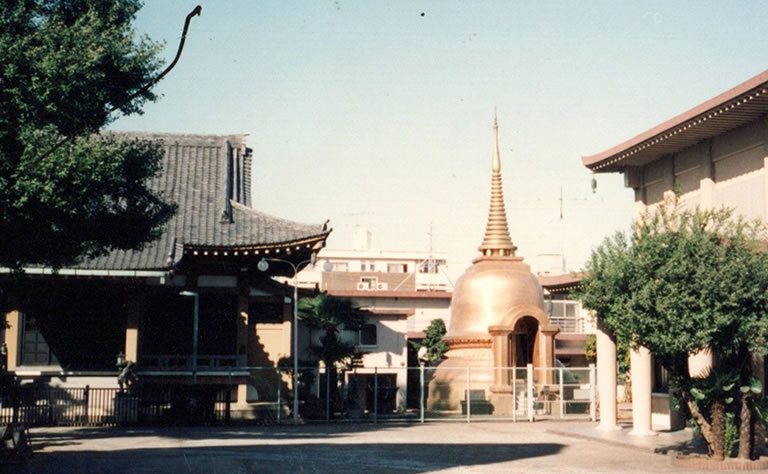 This temple has been highly respected in this region for a long time.
When you enter the temple grounds the first thing you see is the shining gold pagoda.
It was called the first tower of Tokyo and was said to hold a few grains of Buddha’s bones. It is a place in Tokyo where faithful Buddhists from Southeast Asia congregate.
This temple has been highly respected in this region for a long time.
When you enter the temple grounds the first thing you see is the shining gold pagoda.
It was called the first tower of Tokyo and was said to hold a few grains of Buddha’s bones. It is a place in Tokyo where faithful Buddhists from Southeast Asia congregate.
Sugiyama Park
This park is very well known, but is a surprisingly small one. Locals use the park as a place to rest. Throughout the year there are events such as kids sumo competition, mochi rice cake pounding events, and autumn festivals. In 2010, a bicycle parking area was created underground.Benchmark
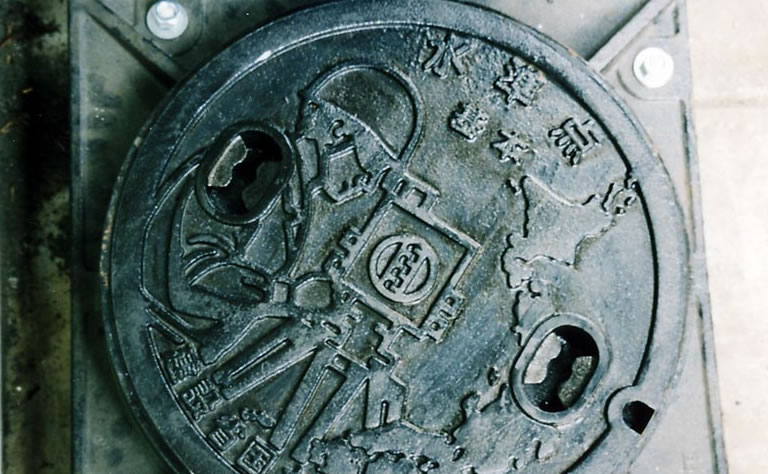 There is an unfamiliar benchmark on the front sidewalk of Machioka confectionery which is at the Nabe-Yoko intersection.
There are only 5 places in Nakano-ku where you can see changes of the altitude of land, which is checked here every year.
There is an unfamiliar benchmark on the front sidewalk of Machioka confectionery which is at the Nabe-Yoko intersection.
There are only 5 places in Nakano-ku where you can see changes of the altitude of land, which is checked here every year. 
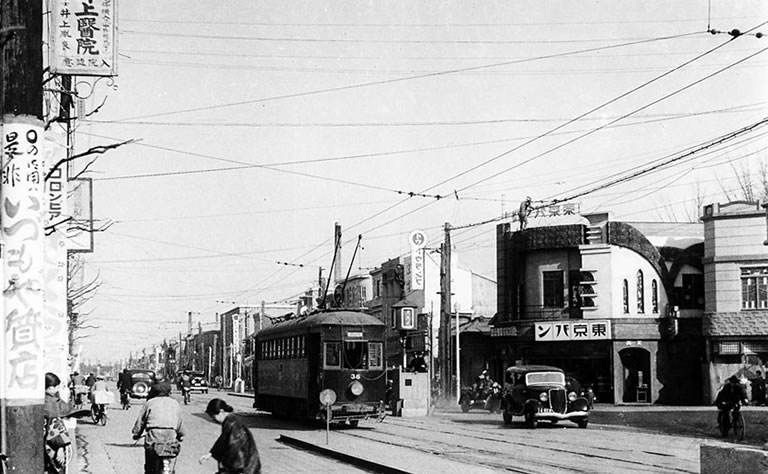
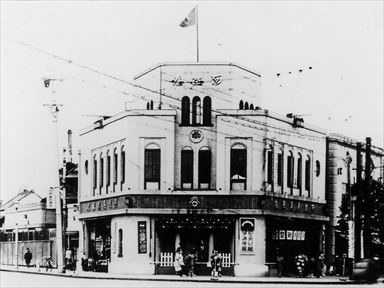 Awa-Ya Clothing shop before the war which was replaced by Mizuho Bank at the Nabe-Yoko intersection.
Awa-Ya Clothing shop before the war which was replaced by Mizuho Bank at the Nabe-Yoko intersection.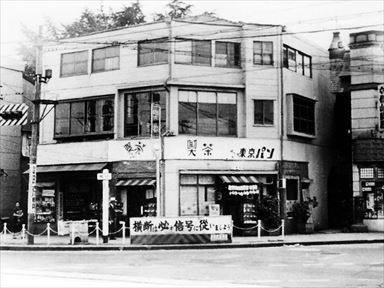 Tokyo-Pan (bread) located at today’s MUFG Bank
Tokyo-Pan (bread) located at today’s MUFG Bank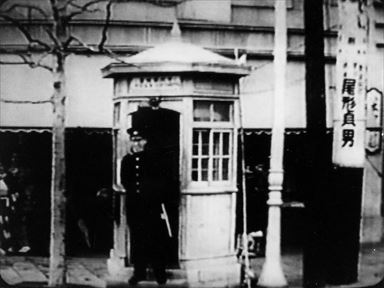 1928: The police box at the Nabe-Yoko intersection
1928: The police box at the Nabe-Yoko intersection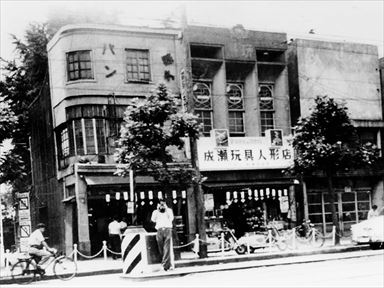 1940-1941: The large ginkgo tree of Gosha Inari Temple can be seen behind the Naruse toy shop
1940-1941: The large ginkgo tree of Gosha Inari Temple can be seen behind the Naruse toy shop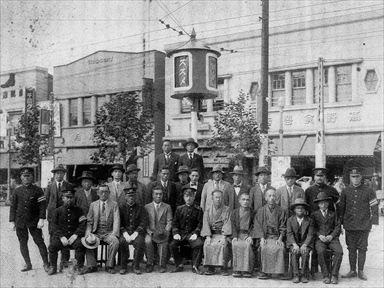 1928: The commemorative photo in front of the Nabe-Yoko intersection traffic signal
1928: The commemorative photo in front of the Nabe-Yoko intersection traffic signal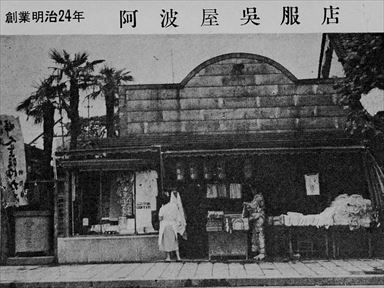 Awa-Ya Clothing shop after the war
Awa-Ya Clothing shop after the war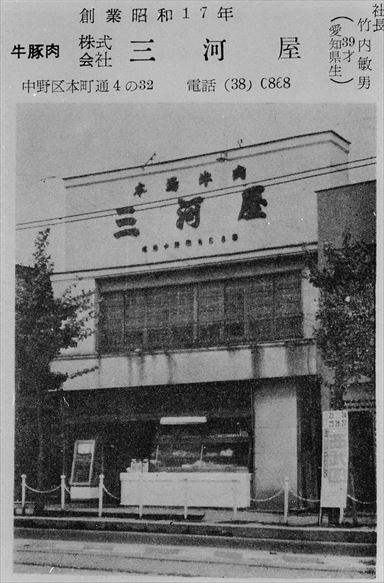 Mikawa-ya Shop
Mikawa-ya Shop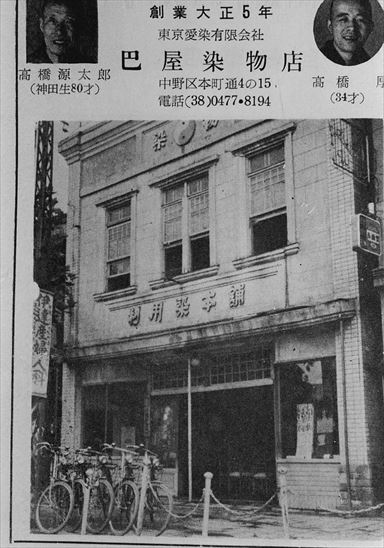 The Tomoe-Ya Dye shop
The Tomoe-Ya Dye shop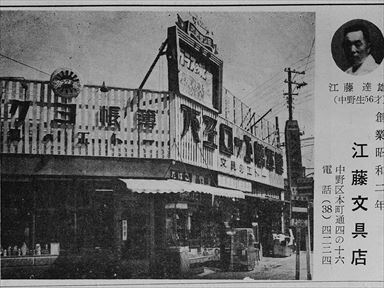 1945: The Eto Stationery shop
1945: The Eto Stationery shop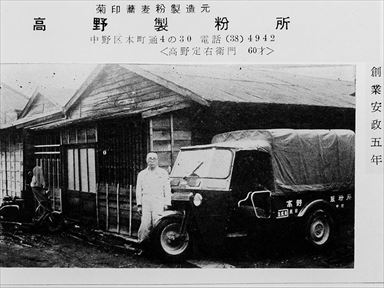 1945: The Takano Flour Mill
1945: The Takano Flour Mill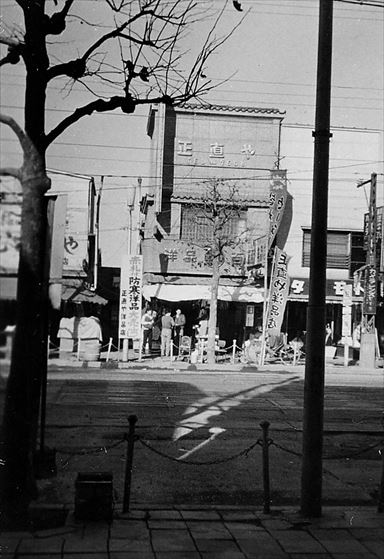 1955: The Shojiki-Ya Western Apparel shop
1955: The Shojiki-Ya Western Apparel shop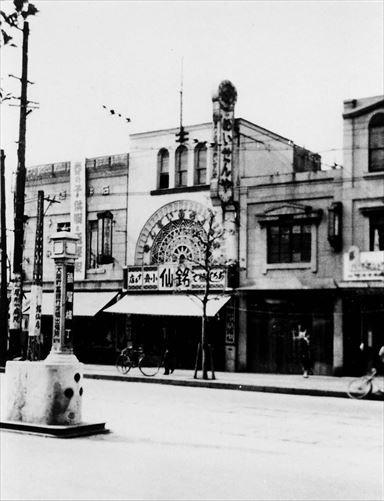 The Toden Nabeya-Yokocho stop in front of Meisen-Ya
The Toden Nabeya-Yokocho stop in front of Meisen-Ya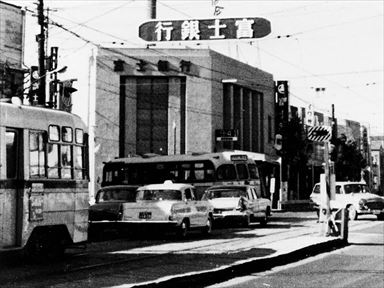 1962: Fuji Bank and The Toden Nabeya-Yokocho stop
1962: Fuji Bank and The Toden Nabeya-Yokocho stop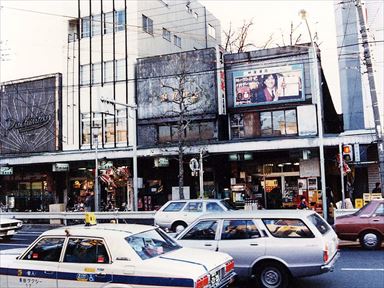 1975: Hayashi-Ya Liquor shop・Fujio Construction・ Naruse Toy shop, Nabe-Yoko Hall
1975: Hayashi-Ya Liquor shop・Fujio Construction・ Naruse Toy shop, Nabe-Yoko Hall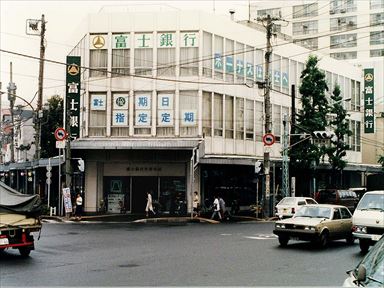 1981-1983: Fuji Bank
1981-1983: Fuji Bank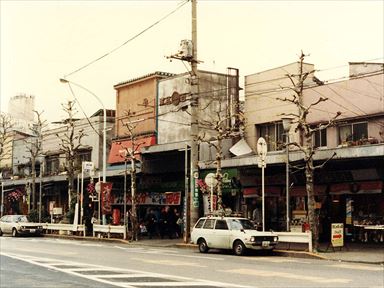 1981: Saito Watch shop・ Shojiki-Ya・Musashi-Ya
1981: Saito Watch shop・ Shojiki-Ya・Musashi-Ya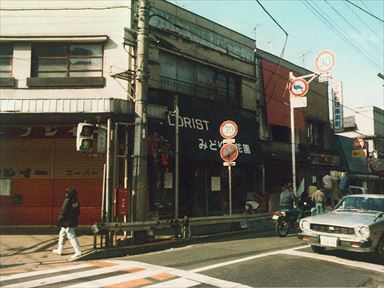 1982: Fujii・Midori Flower shop
1982: Fujii・Midori Flower shop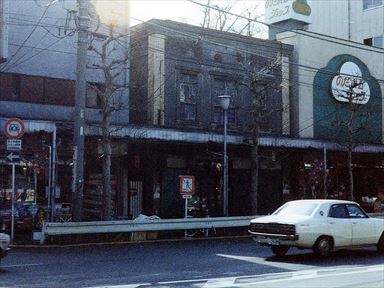 1983-1985: Noda Home shop・Tomoe-Ya・Tomita-Ya
1983-1985: Noda Home shop・Tomoe-Ya・Tomita-Ya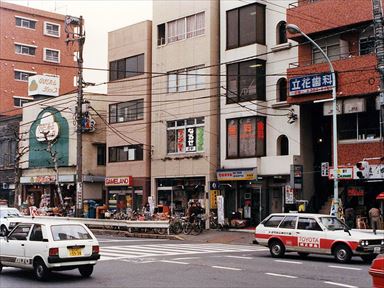 1983: Hayashi-Ya Liquor shop・Kohon-Do・Naruse Toy shop・Game Center
1983: Hayashi-Ya Liquor shop・Kohon-Do・Naruse Toy shop・Game Center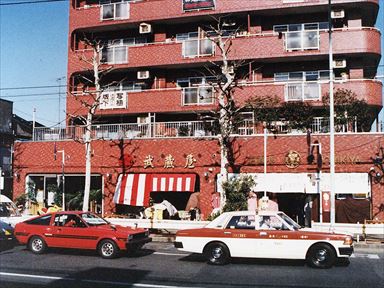 Plum Nabe-Yoko at Showa era
Plum Nabe-Yoko at Showa era